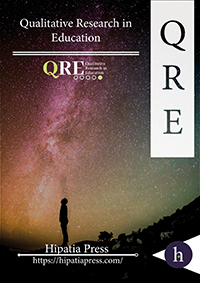Understand Sexual Risk Behaviours in Young Adults and Challenges in their Education
Keywords:
Downloads
Abstract
Sexual risk behaviours are considered sexual conducts that can cause biological, psychological and social damage. Therefore, sexuality education is considered the only effective way to avoid it. This project aims to understand sexual risk behaviour factors and their consequences in young adults and to explore strategies they would use to face them. To answer these questions, we conducted a qualitative study in which we interviewed 11 young adults using an asynchronous mail technique due to the Covid19 pandemic. We also carried out a thematic analysis and developed our key results: 1) Sexual attitudes and behaviours; 2) Sexual risk factors, 3) Sexual risk consequences; and 4) Educational approach and strategies. Similarities in the themes were verified with previous literature, exposing the importance of learning to identify factors and consequences to respond appropriately. Participants believe that comprehensive and egalitarian sexuality education applied at individual and community level is a solid method that can improve sexual health and well-being. To conclude, this study reveals the importance of listening to young adults’ perspectives towards these conduct variables and educational approaches in order to establish global health strategies that could be based on these results.Downloads
Download data is not yet available.
Downloads
Published
2021-06-28
Metrics
Almetric
Dimensions
How to Cite
Alonso-Martínez, L., Fernández-Hawrylak, M., Heras-Sevilla, D., & Ortega-Sánchez, D. (2021). Understand Sexual Risk Behaviours in Young Adults and Challenges in their Education. Qualitative Research in Education, 10(2), 172–203. https://doi.org/10.17583/qre.2021.6996
Issue
Section
Articles
License
All articles are published under Creative Commons copyright (CC BY). Authors hold the copyright and retain publishing rights without restrictions, but authors allow anyone to download, reuse, reprint, modify, distribute, and/or copy articles as the original source is cited.












